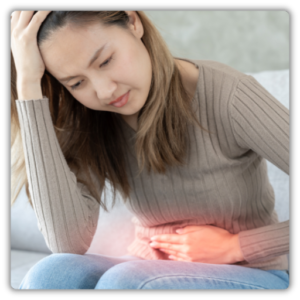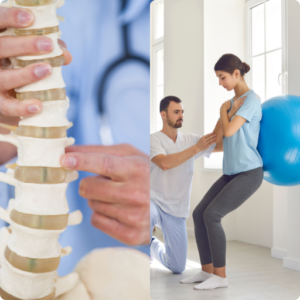 Abdominal pain in women is incredibly common and can stem from a variety of causes, depending on its severity and location. Sometimes it’s a minor inconvenience, like the stomach flu, while other times it’s a sign that your body needs attention. Abdominal pain may present as sharp, dull, or cramping, and lower abdominal pain is especially common in women. Understanding the possible causes, recognizing when pain gets worse, and knowing which types of abdominal pain require treatment can help you take control of your health. By identifying the symptoms and addressing them, you can find relief faster and get back to feeling your best.
Abdominal pain in women is incredibly common and can stem from a variety of causes, depending on its severity and location. Sometimes it’s a minor inconvenience, like the stomach flu, while other times it’s a sign that your body needs attention. Abdominal pain may present as sharp, dull, or cramping, and lower abdominal pain is especially common in women. Understanding the possible causes, recognizing when pain gets worse, and knowing which types of abdominal pain require treatment can help you take control of your health. By identifying the symptoms and addressing them, you can find relief faster and get back to feeling your best.
KEY POINTS
Abdominal pain in women can result from various causes, including menstrual cramps, digestive issues, urinary tract infections, and reproductive health conditions.
Certain symptoms, such as severe pain, fever, vomiting, or blood in the stool or urine, may indicate a serious issue that requires immediate medical attention.
Diagnosis often involves medical history, imaging tests, and sometimes minimally invasive procedures to determine the root cause of the pain.
Treatment options range from at-home remedies and lifestyle adjustments to prescription medications or surgery, depending on the severity and underlying condition.

Pop in your email below, and we’ll zip it straight to your inbox so you never lose it!
Common Causes of Abdominal Pain in Women
There are plenty of potential culprits behind abdominal pain, ranging from mild issues to conditions that require immediate attention. Here’s a breakdown of common causes and what they might mean:
Period pain is a common type of pain many women experience. These cramps, caused by the uterus contracting, are often felt as a dull ache in the lower left or lower abdomen. While they’re typically mild to severe, a heat pack or over-the-counter pain relievers can help ease the pain.
Digestive issues such as bloating, constipation, gas, or indigestion often cause abdominal pain. This type of pain develops in varying intensities, from mild to sharp, and may be progressive if untreated. Staying hydrated, eating fiber-rich foods, and avoiding heavy meals are simple ways to prevent digestive discomfort.
3. Urinary Tract Infections (UTIs)
UTIs are another common cause of pain felt in the lower abdomen. This pain is often accompanied by burning during urination and may even lead to acute discomfort. Left untreated, the infection can spread to the kidneys, making a quick trip to the doctor essential for a treatment plan.
The female reproductive system can be the source of abdominal pain caused by conditions like ovarian cysts, endometriosis, or pelvic inflammatory disease. Symptoms may include chronic abdominal pain, irregular periods, or pain during intercourse. Ectopic pregnancy, which occurs when a fertilized egg implants outside the uterus, is another possible cause of severe pain that requires immediate medical attention.
5. Appendicitis
Pain that occurs near your belly button and shifts to the lower right abdomen may signal appendicitis. This type of pain is often acute and progressive, and symptoms may include vomiting or fever. If you experience abdominal pain like this, seek emergency care to avoid complications.
Kidney stones are known for causing severe pain in the abdomen, lower back, or even sides. This pain develops suddenly and can be accompanied by nausea or pain and vomiting. Staying hydrated and consulting a healthcare provider is key to managing this condition.
Chronic abdominal pain is a hallmark of conditions like irritable bowel syndrome (IBS) or acid reflux. These disorders often cause pain felt in different regions of the abdomen, depending on the severity. Managing these conditions typically involves dietary adjustments, medications, and a customized treatment plan.
With so many causes of abdominal pain—including everything from mild digestive issues to serious conditions—it’s crucial to listen to your body and seek medical advice if symptoms persist or worsen.
Key Symptoms to Watch For

Not all stomach pain is created equal. Some symptoms are more concerning and require prompt medical attention. These include:
- Severe, worsening pain.
- Pain accompanied by fever, nausea, or vomiting.
- Blood in your stool or urine.
- Difficulty passing gas or stool.
- Persistent pain during pregnancy.
If any of these red flags pop up, don’t wait—see a doctor right away.
How Abdominal Pain is Diagnosed
To figure out what’s causing your pain, your doctor will ask detailed questions about your symptoms and may recommend tests like bloodwork, ultrasounds, or imaging scans. For certain conditions, minimally invasive procedures like laparoscopy might be used to get a closer look.
Treatments for Abdominal Pain
The best treatment depends on what’s causing the pain. Here are a few common approaches:
- At-home care: For minor issues like gas or period cramps, heating pads, hydration, and over-the-counter medications can provide quick relief.
- Lifestyle changes: Eating smaller meals, managing stress, and avoiding known triggers can help with conditions like IBS or acid reflux.
- Prescription medications: UTIs, IBS, and other conditions may require antibiotics or other treatments to manage symptoms.
- Surgery: In more serious cases, such as appendicitis or large ovarian cysts, surgery may be necessary to resolve the issue.
When to Seek Help
If your abdominal pain is sharp, sudden, or doesn’t improve after a few days, it’s better to err on the side of caution and see a doctor. Getting the right diagnosis and treatment can make all the difference.
Wrapping It Up
Abdominal pain can feel overwhelming, but it’s often treatable once you identify the cause. Whether it’s as simple as dietary tweaks or as serious as surgery, taking proactive steps toward relief is key. Listen to your body, don’t ignore concerning symptoms, and work with a healthcare provider to find the best path forward. A little knowledge—and the right care—goes a long way toward improving your health and peace of mind.










